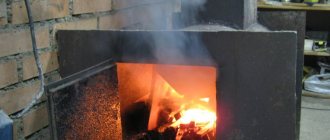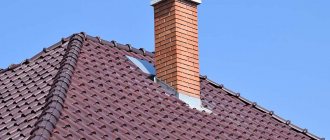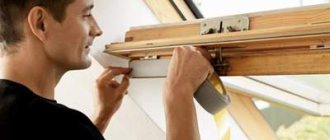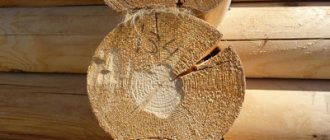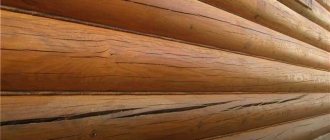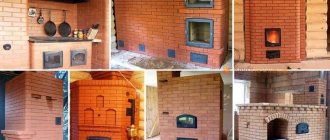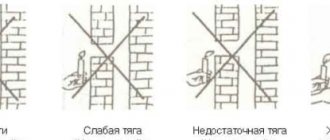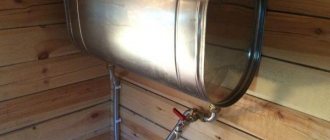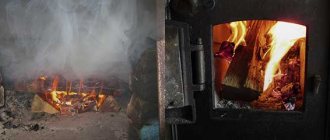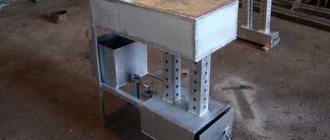Do you remember Valentin Bisyaev, known among wide circles of television viewers as a repeat offender thief - Kopcheny, from the legendary film “The meeting place cannot be changed”? So, experts in the criminal world admit that Valik received his sonorous nickname in childhood, when he began to engage in petty thefts in the attics of law-abiding citizens. Often, the attic spaces were simply saturated with the smell of smoke and burning, which is why the swindler gradually acquired a persistent and characteristic smell of overcooked ham. In general, in order not to follow the slippery slope of this legendary character, take it as a rule: if the stove smokes, take action.
Why does the stove smoke in the bathhouse?
The construction of a sauna stove is relatively simple. The design includes 4 functional elements:
- ash pan - a chamber located under the firebox, ash and ash accumulate here - the remains of burnt wood or coal, it should be cleaned periodically;
- firebox - a chamber where fuel burns, air is heated, which then, moving through the chimney channels, heats the walls of the housing, the combustion chamber and the ash pan are separated by a grate;
- chimney pipe - a channel through which gaseous combustion products are discharged outside; the correct structure of the chimney ensures draft;
- A heater is a device unique only to a sauna stove; it is a container with stones that heat up from the body, accumulate heat and release it to the air, but more evenly and much longer than a metal stove does.
If there is no draft in the bathhouse, the cause is any violation in the operation or structure of the structural elements, with the exception of the heater.
Errors in the design of the furnace leading to smoke
If, at the first attempt to light the stove in the bathhouse, smoke comes out, this indicates design errors. It is recommended to immediately contact a specialist:
- poor draft in a sauna stove most often appears when there is an error in the chimney design, channel cross-section, height of the device, internal surface - these parameters determine the functionality of the structure;
- the second fundamental mistake is thermal insulation, in the combustion chamber the gas has a very high temperature, rising through the pipe, it cools when it comes into contact with the walls of the chimney in the bathhouse, if the temperature drops too much, the smoke comes back; the chimney pipe, especially a metal one, must be carefully insulated;
- The stove itself needs to be thermally insulated: if the bath area is large or the steam room and dressing room are heated at the same time, the body loses a lot of heat and the smoke cools;
- tightness - we are talking about seams and doors; the firebox and ash pan must close tightly to ensure good traction.
Important! If smoke does not appear in the bathhouse immediately, but after several years of operation, this does not indicate a design error, but a malfunction or exhaustion of the resource.
Pipe length
The height of the chimney in the bathhouse matters. It must rise above the ridge of the building, otherwise the draft will not be enough for normal operation of the furnace. The smoke exhaust structure is protected with a metal cap. If it is not there, strong winds can easily penetrate inside and prevent smoke from being removed.
Another design error is the location of the smoke exhaust duct at the same level as the combustion chamber door or even below it. In this case, normal draft is not enough to prevent the smoke from returning.
The best option is a straight pipe. Deviation from the vertical is allowed, but weakens traction. Turns and angles increase the risk of clogging.
Insufficient chimney cross-section
The dimensions of the stove in the bathhouse depend on the size of the heated room. This parameter determines not only the dimensions of the combustion chamber, but also, accordingly, the diameter of the chimney. These device parameters are of decisive importance:
- if the diameter is too small, the draft is initially good, but during intensive use the narrow pipe simply does not have time to let through a large volume of gas, and the heater in the bathhouse smokes;
- if the diameter is too large, the draft is very poor, it is difficult to light the stove, it smokes almost constantly;
- the shape of the chimney duct also matters, the best option is a round cross-section, turbulences are formed at the corners of the square, they interfere with the escape of smoke, which leads to smoke;
- The narrowing along the smoke exhaust channel significantly impedes the passage of gases, which also causes the draft to overturn.
Important! The best option for a stove in a bathhouse is a steel chimney. However, this option must be thermally insulated, and not only when passing through the ceiling, but along the entire length.
Leaky chimney
Cracks in the brickwork or burning through the seams of a metal chimney makes it leaky. This is a very dangerous problem, since through such openings smoke enters the room, and in an inconspicuous amount. The user does not feel the appearance of carbon monoxide, and the latter at a minimum concentration can lead to death.
Also, sparks get inside the steam room through the joints, and this threatens a fire in the bathhouse.
Against the background of such dangers, traction failure does not seem to be a serious problem. However, it is also present. Repair of sauna stoves includes inspection of joints and seams for tightness and elimination of violations.
The chimney is clogged
The inner surface must be smooth so as not to interfere with the release of gases. Along with the smoke, some of the ash also comes out through the chimney. If the inside surface of the channel is uneven, ash and soot remain on the walls, gradually clogging the chimney.
At first, this does not affect traction at all. However, accumulations of soot on the walls, especially if the pipe is brick, provoke increased ash deposition. The process accelerates, and after a short time the stove begins to smoke.
An additional danger for a bathhouse is the risk of soot igniting when hit by an accidental spark.
Diagnosis and elimination of faulty ventilation system
The steam room in the bathhouse is not a sealed room. Natural ventilation is usually installed here, since forced ventilation creates too thin air. The system consists of openings for inflow and outflow. The latter are placed at different heights, and the difference in air temperature in the steam room and outside provides the necessary movement.
Malfunctions of the ventilation system are obvious:
- in the steam room, the inlet opening is located at a height of 15 cm from the floor so that the incoming air has time to warm up as much as possible; otherwise the steam room does not heat up, no matter how hard the stove is heated;
- an outflow hole is formed on the opposite wall, otherwise there is no air movement, and the stove, having ceased to receive the required volume of oxygen, begins to smoke;
- the outlet hole must be higher than the supply hole, since warm air is lighter; if this requirement is not met, the ventilation in the bathhouse again does not work;
- the openings are protected with grilles to detect clogging of the ventilation ducts; if the latter occurs, the operation of the system is disrupted.
Important! A stove in a bathhouse with poor ventilation does not develop enough power and begins to smoke after some time when there is not enough air.
The situation can be corrected by creating the correct ventilation system. If the configuration of the steam room or the entire bath is complex, experts recommend installing forced ventilation.
Smoke due to damage to the oven body
If there is draft in the chimney and combustion chamber, the cause of smoke may be damage to the housing. Most often this happens with a metal structure. There are a lot of welds here, and if one of them is made poorly, smoke from the firebox enters the room.
Over time, the seams on the metal product overheat, and the heater smokes after several years of use. Repairing a metal sauna stove is the only way out in this situation.
Another reason is insufficient thermal insulation not only of the chimney in the bathhouse, but also of the stove body. With weak initial draft, overcooling of the furnace leads to cooling of the gases. The draft disappears and the heater smokes.
A possible reason is insufficient sealing of the cleaning doors. If they do not close tightly, sufficient draft force is not generated.
The stove in the bathhouse smokes when the door is open
In the correct design of a heater, there is always traction. So if the stove in the bathhouse smokes through the open door, this indicates that the draft has turned over. The most common case is a clogged chimney, but it is not quite common.
If the chimney gradually becomes dirty, the draft decreases gradually. If a brick version is installed, and the stove has been in use for a long time, there is a risk of brick collapse. When a fragment gets inside the chimney or below, the operation of the heater is disrupted, and smoke goes into the firebox.
The blower is not long enough
Fuel requires air to burn. It is supplied to the grate, where coal or wood is burned, through a ash pit, that is, an ash pan. The air supply is controlled by the doors. When the stove is lit, the door is opened slightly to allow for a stronger fire. When the fuel should simply smolder, the inflow is reduced by closing the door.
The ash pan should have the same dimensions as the grate. Poor draft in a sauna stove occurs if the vent is smaller in area.
The air ducts in the furnace are clogged
If the stove in the bathhouse heats not only the steam room, but also the dressing room and rest room, it is equipped with air ducts. For a small area this is a completely acceptable option. Air ducts become clogged over time. They are more difficult to clean since they are mostly horizontal structures.
To clean the air ducts, potato peels are burned in the firebox. At the same time, you can see white flakes flying out of the pipe on the roof - a sign of cleansing.
You can also periodically heat it with aspen wood. Wood of this type is very wet, which leads to the soot layer becoming wet and falling off.
Taking a break from using the oven
Sometimes the stove in the bathhouse smokes not because there is some kind of malfunction, but because it is used too rarely. If the bathhouse is heated once a week, then the firebox cools down so much that the gas does not warm up enough to rise up the chimney.
It is recommended to first warm up the pipe by burning straw, paper or other fuel that burns quickly in the firebox.
The most common causes of smoke from the furnace
The chimney is too narrow
It can only be eliminated by contacting specialists. Most likely, redevelopment will be required.
The most common causes of smoke that do not relate to the design of the stove:
Note! Smoke can be eliminated only after the exact cause has been established. Therefore, it is important to carefully monitor the operation of the oven.
Errors in the design of the furnace leading to smoke
Photo of an error in the chimney design
The appearance of smoke in a bathhouse is not always the result of the influence of external factors, which are quite easy to eliminate. Often the reason lies in the design features of the stove itself. And then you will need to make more efforts, up to replacing it with a new one.
What stove will never smoke? One whose pipe cross-section corresponds to the amount of gas and smoke discharged, that is, when the diameter is greater than 120 mm. In addition, the outlet channels should be short in length and have a low number of revolutions.
The main reason, based on the design of the furnace, is errors in calculations during construction:
Why does the stove in the bathhouse smoke when it is heated with straw or the remains of vegetation from the garden? This happens due to the blower being too long. But it can be reduced a little by placing half a brick at its end - on an edge or flat.
A combustion chamber with defects also causes smoke:
Note! If the stove is not new, but has been in use for many years, then the appearance of smoke may indicate that it has exhausted its service life.
Other reasons
There are other reasons why cravings disappear and the stove in the bathhouse begins to smoke intensely. In such a situation, not only internal factors are at work - design errors, clogging, but also external ones:
- wind – strong gusts of wind lead to smoke being thrown into the oven; having lost the ability to move upward, the smoke goes into the room, this problem is easily solved by the installation of chimneys or weather vanes, the devices prevent the ingress of water and snow;
- high humidity - at the same time the atmospheric pressure decreases, and the smoke becomes denser, it moves very reluctantly, this phenomenon can be seen during fog: the smoke spreads along the roof and returns back at the slightest gust of wind;
- the hotter the sun shines, the worse the draft; the temperature difference between the smoke in the chimney and the air outside is too small to create draft, and at temperatures above 35 degrees, capsizing occurs.
Sometimes, to prevent smoke, you just need to light the stove correctly.
Checking the condition of the firebox and ash pan
It is clear that if you take on the “dirty” job of cleaning the stove, it would be correct to simultaneously check for the presence of soot inside the combustion chamber. The settling and turning of the flow for a few seconds does not mean that the stove immediately begins to smoke, but it is at these moments, imperceptible to the eye, that dirt is thrown from the stove pipe into the firebox.
Therefore, for preventive purposes, the brick vault and passages, as in the diagram, need to be blown out and cleaned with a vacuum cleaner. As a rule, after cleaning there are always cracks, especially around the fire door fastening and in the area of the transition to the smoke channel. Such cracks can smoke before the chimney warms up, or, conversely, suck in air, reducing the already poor draft of the stove in the bathhouse.
If you suddenly find a plug made of crumbling brick in the smoke ducts, you will have to pick out the inspection plug made of brick halves with a spatula and remove dirt through the opened window.
Sauna stove repairs are carried out using special clay grouts. For the hot part, clay with fireclay powder and asbestos is used, the rest is rubbed with greasy clay with chopped asbestos fiber and sand.
Sometimes the stove begins to smoke due to a mismatch in the size of the firebox. The large space of the combustion chamber takes a long time to warm up and, most importantly, unevenly. As a result, part of the very hot flue gases is reflected from the roof, as in a Russian stove, and is squeezed out onto the firebox door.
Accordingly, the coating of the opening, the wire and the door frame burn, the combustion chamber begins to smoke, as if there was no draft in the pipe. The stove also smokes in a situation where the outlet to the chimney is located below the grate.
In both cases, the problem is solved by installing an additional fireclay wall inside the firebox.
A stove in a bathhouse may start to smoke if the outlet of stove gases into the chimney channel is combined with the channel from an additional dryer or wood-burning water heater. In this case, you cannot light two stove devices at the same time. The furnace with the largest volume of the combustion chamber needs to be heated first.
How to remove back draft in a chimney
Problems with traction in the bathhouse are divided into 2 categories: those associated with errors in the design and those that appear during operation.
The first includes the illiterate structure of the chimney. If its diameter is too small, or the pipe has narrowings, then the only way to solve the problem is to completely disassemble the device.
Group 2 includes situations when the draft disappears due to clogging of the chimney pipe, filling of the ash pan, or loss of tightness. Repairing the sauna stove or cleaning it completely eliminates the problem.
The owner of the bathhouse can eliminate some of the reasons for the draft tipping over on his own:
- clogging of the chimney in the bathhouse - the operating rules oblige the owner to clean the chimney or invite workers to do this, clean the chimney mechanically - using a brush on a cable, or burning with wood; flammable liquids cannot be used;
- if the chimney is made of brick or ceramic, you can reduce clogging by installing a metal sleeve inside it; its walls are smooth, soot is deposited here with difficulty, so you will have to clean the pipe much less often;
- tightness - all detected cracks or leaky joints should be immediately covered with sealant, if the stones of the brick heater are cracked or the same thing happened to the chimney, alas, the stove will have to be completely disassembled;
- if the chimney pipe or the stove itself is overcooled, it is necessary to improve the thermal insulation, the body is plastered, the chimney is insulated with special materials;
- if the ash pan is too long, the wind from the street hits the wall of the combustion chamber and pushes smoke into the room, this problem is solved by filling part of the ash pan with bricks; if the ash pan is short, the latter is remade.
For more complex problems, turn to an experienced stove maker.
How to care for the stove
The cost of servicing a stove is lower than repairing it
If the stove has not been used for a long time, then before heating it, you should wipe the entire structure with a damp cloth. Particular attention is paid to the place where the pebbles are placed. There should be no signs of visible contamination.
The stones must be thoroughly washed and dried, then placed in a special niche quite tightly. But so that steam leaks through the gaps. The instructions for metal stoves usually require removing stones that cracked after the first start.
To prevent smoke, it is important to carry out regular inspections of the structure. Eliminate all, including the smallest, damage. This applies not only to a brick stove, but also to a metal one. It’s good if a specialist does this.
It happens that when a brick stove for a bathhouse is built in violation of the technology, the cracks formed in the masonry contribute to the appearance of smoke. A large number of elbows folded by a stove-maker can make drafting difficult, and, consequently, smoke will return to the bathhouse.
When such a situation is noticed, you must immediately take action - contact a specialist who will change the design of the furnace. Some problems can be resolved quickly and easily, while others will require more serious intervention.
Device for quick cleaning of the chimney
How to increase draft in a sauna stove
If inspection of the stove in the bathhouse does not reveal any problems, but the draft is still weak, you can resort to additional methods:
- instead of a conventional cap, a smoke vane or deflector is mounted on the chimney; this device allows you to use the wind as an additional exhaust hood;
- An electric smoke fan can be installed in the chimney duct; it creates forced draft under any conditions, the disadvantage is dependence on electricity and the need to protect the cable.
Home craftsmen independently develop weather vanes and traction amplifiers of various designs.
Types of furnaces
It is necessary to choose what type of stove will be installed at the stage of construction of the bathhouse.
Today there are different types of stoves, but the most commonly chosen ones are traditional ones that burn wood. Such stoves create incomparable comfort. And of course over time they were modernized.
Today, modern sauna stoves made from the following materials are quite common in baths:
- cast iron;
- steel;
- stainless steel
Many bathhouse owners prefer stoves made of brick. It is quite difficult to do it yourself, since this matter requires experience and knowledge of the nuances. As a rule, from the very beginning of using a stone stove, heating problems arise. Most often, there is no draft and as a result, smoke goes into the bathhouse.
Quite often in bathhouses you can find homemade iron stoves. They are often made using a handicraft method, using welding. If it was done by a professional, then there will be no problems during operation, and you can safely enjoy your bath procedures. There is no point in saving on the stove, otherwise you may end up with a design that is completely unusable.
The stove in the bathhouse is smoking, what to do: tips
Traction stalls occur for a variety of reasons. It is impossible to immediately determine what exactly led to the smoke. But there are several simple proven methods:
- first, ventilate the bathhouse in order to equalize the air temperature and pressure inside and outside the building, because if the flat roof of the bathhouse gets too hot, this leads to the draft overturning;
- mechanical obstacles - when igniting the stove, the damper must be open, as well as the vents on the chimney, if any, an overfilled combustion chamber or ash pan also does not allow creating draft, a snow cap on the chimney will also not allow the heater to light;
- to generate draft, they achieve rarefaction of the air inside the pipe; to do this, it is enough to burn a little paper in the firebox.
Important! To warm up the chimney or create a vacuum, do not use liquid flammable materials such as gasoline or kerosene. Otherwise, a fire is inevitable.
How to properly fix the problem
Repair of sauna stoves, built by an experienced mason from good brick, usually comes down to a slow and most thorough inspection of the entire masonry, from the vent to the top of the chimney. If there is poor draft in the sauna stove, the cause may be a crack, either in the wall or in the arch of the heater, or in the chimney. It is clear that there may be other surprises, but in any case, the decision on what to do if the stove in the bathhouse is smoking is made after a full inspection.
For your information! Cracks in brick sauna stoves pose a certain threat to the entire structure. The stove not only smokes, it is a source of fine hot ash, which is what causes the baths to burn.
Reason 6 - combustion does not occur in the oven
Sometimes you can observe a phenomenon when portions of smoke and sparks fly out of the furnace in whole bursts. This is due to the fact that combustion in the furnace does not occur in the firebox itself, but in the smoke channels, and is of a pulsed nature.
Eliminating this cause depends on the specific oven. There is no universal solution. In some cases, simple traction control will help. However, many stoves will “shoot” intensely at any draft. To cope with the problem, you can try simply laying less firewood. This is better than waiting until the stove “fires” and the room is filled with smoke.
Presence of cracks
It's no secret that over the years the stove becomes covered with a network of cracks and cracks.
Especially at the junction of clay and metal elements, for example, around a slab. Wells can also crack at the seams. The cracks could remain in the place where a knockout brick is inserted for cleaning, or the vent and firebox doors have become loose over time.
Also, atmospheric phenomena sometimes destroy the outer part of the pipe on the roof.
It is possible and necessary to deal with cracks, because air is sucked in, its natural flow is disrupted, and at the slightest disturbance in draft for other reasons, smoke finds its way out, even with the door closed!
The cracks are sealed with clay mortar, similar to the one on which the stove is made. Deep cracks are widened using a knife or similar tool to allow the mortar to penetrate deeper between the bricks. Then the gap is moistened with water and sealed well. Small cracks can be whitened.
Practical advice on choosing firewood and kindling
The stove in the bathhouse can also smoke due to improper kindling. To avoid smoke, just follow these simple rules:
- Clean the ash pan and firebox. This must be done before each use of the oven.
- Open the valve and place the kindling on the grate. A splinter, birch bark or dry wood chips will do.
- Open the ash door slightly and light the kindling. After this, load the firebox with firewood. Lay them in tight horizontal rows.
- Close the firebox and open the blower door completely.
- Reload the firewood after 30-40 minutes. During this time, the previous batch should burn down to large coals. Try not to open the firebox between fills to prevent cold air from entering the oven.
- Regulate the combustion process using a blower and valve. The flame should be calm and straw-colored. If the fire turns pale, you need to close the ash door - this will reduce the air flow. If it gets dark, you need to open the door.
- For the last stack, it is best to use aspen firewood. They create a long flame and burn off accumulated soot.
- After the last batch of wood has burned through, rake the remaining coals onto the grate. The valve can be closed when the coals darken and no bluish lights appear above them.
Important! It is not recommended to overheat the stove. Obvious signs of overheating are the red color of cast iron fittings and the high temperature of brick walls (more than 90 degrees).
Many people believe that heating can be done with any materials. If only they burned. With this approach, sooner or later the question arises as to why the stove smokes when the door is open or when lighting is started. The reasons may be as follows:
- Small debris does not burn through completely. Light particles are picked up by the air flow, and they settle on the walls of the chimney.
- Remains of glossy paper clog the grate.
- Damp firewood causes excess soot formation.
It is best to use dry birch firewood, approximately equal in size, as fuel. Other hardwoods found in the middle zone are also suitable - aspen, ash, alder, poplar, oak. Willow produces little heat and burns unevenly.
If you have eliminated all possible causes and the stove continues to smoke, do not be a hero and contact a specialist. Malfunctions in the operation of the stove can lead not only to the appearance of a specific odor, but also to carbon monoxide poisoning or a fire. Be careful!
Technical nuances
Overheating is equally dangerous for both metal and refractory brickwork, especially in the seams. Metal parts are prone to warping, bending, directional twisting, and burning. This is especially true for lightweight steel stove models. A few subtle but serious defects are already enough to cause a headache like why an iron stove smokes in a bathhouse.
And if burnouts can, in most cases, be melted by inverter welding with repair heat-resistant electrodes or eliminated by applying patches, which is more correct, then warping and other linear deformations must be straightened, often painstakingly embroidering problem areas using an angle grinder cutting disc, and then restoring and strengthening the damaged geometry of various kinds of inserts, scarves, segments and other additional elements.
A few words should be said about why there is poor draft in the furnace, which is associated with the production culture determined by the construction of the furnace and the technical arrangement of smoke channels. Like any heating device whose operation involves burning fuel, the stove emits combustion products, both solid and gaseous.
The dynamics of gases is associated, first of all, with the presence of certain obstacles in their path. It is not without reason that when constructing a chimney, responsible executors use such a technological technique as “scraping”, the essence of which is to eliminate various types of irregularities and obstacles in ducts, chimneys, distributors, and outlets.
In metal single-wall pipes, a mandatory element is a condensate receiver glass, the purpose of which is to collect and remove condensate from the zone of movement of flue gases, preventing them from being moistened and cooled. The presence of these elements, as well as a sufficient number of service doors, will help to avoid an unpleasant situation when the stove in the bathhouse smokes, what to do, where to run.
What should you do if you detect smoke?
If a potbelly stove smokes, then we can definitely say that the design has a faulty draft, which is an important parameter for the stove’s performance. However, there can be a huge number of reasons that could contribute to impaired cravings. Smoke may appear during lighting of the stove or be present constantly, however, in any case, you first need to determine the cause of the malfunction of the potbelly stove, and then begin repair work.
It is important to know that if smoke comes from the stove, then this violation will not only negatively affect the health of people living in the house or constantly present in the garage where the potbelly stove is installed, but can also pose a danger to human life.
The first step when detecting smoke is to check all the channels through which the smoke moves, and you should also carefully examine the entire body of the stove, since holes or cracks may form on it, and significant and difficult-to-correct errors could have been made during laying.
...and repair the stove
The structure of the furnace is more complicated.
To even inspect it from the inside, you need cleaning doors (cleaning). But in a complex stove you may need so many of them that they will spoil the appearance of the room, and a forgotten or loose cleaning can cause smoke and fumes. Therefore, in many house furnaces, cleaning doors are replaced with cleaning bricks sitting dry in the masonry. By the way, according to the same professional ethics, a conscientious stove maker, when handing over the stove to the customer, had to show where the cleaning bricks are. And according to pre-revolutionary legislation, failure by the previous owner of the furnace to indicate to the new owner the location of the cleaning bricks could lead to criminal liability. If there are no necessary cleanings, then replacement bricks can be easily found by punching
And, what is important, suddenly the cleaning bricks (bricks) showed themselves externally, this is a sure sign that something is wrong with the stove, even if it is still fully operational
The cleaning brick can “appear” as a depression in the wallpaper (item 1 in the figure), its bulge, or a change in color. A crack appears on the whitewash under the plaster, outlining the brick (item 2), through which air can be sucked into the oven. Further - dirty and hard, but simple, pos. 3-6.
How to find a cleaning brick in a furnace
If the stove is lined, it is more difficult to find cleaning bricks on it. For example, tiled cladding can be tapped with great difficulty. However, even in this case, an ordinary housewife is quite capable of finding hidden cleanings, cleaning and repairing even such a rather complex stove as a Swedish one, see the last video:
Video: DIY repair and cleaning of a Swedish stove
Below you can share your thoughts and results with our readers and regular visitors.
You can also ask questions to the author*, he will try to answer them.
Action plan for a stove smoking in the house:
- Open windows and doors to the street to remove combustion products from the room.
- Extinguish the fire in the furnace firebox.
- Think about why the stove is smoking.
- Check the permeability of the stove and chimney channels.
- Try to create draft in the chimney.
- Try again to light the stove.
If the stove is smoking, ventilate the room immediately.
It is very dangerous to be in a smoky room.
Carbon dioxide released when wood burns in a stove is toxic and when inhaled, poisoning (burning) quickly occurs.
A distressed person begins to feel unwell, dizzy, and have a headache.
With severe intoxication, a person loses consciousness.
Losing consciousness in a smoky room becomes a mortal danger.
Therefore, it is extremely important to immediately get out of the source of smoke.
Extinguish the fire in the firebox.
If you do not know the reason why the stove is smoking, you should not try to heat it further.
Of course, the situation is unlikely to change, and there will only be more smoke.
We wonder why the stove is smoking.
First, we check whether the chimney valves are completely open.
After calming down, think about what could be the cause of the smoking stove.
Often, everything is simpler than it seems when you are in a panic.
We check the permeability of the chimney and channels.
We look for cleaning doors, open them and look inside the stove and chimney.
I usually put a camera in the oven and look at the photographs to see what is happening inside.
(caution, the oven may be hot inside)
- Planted furnace channel.
- Normal furnace channel.
If you see what you think are suspicious foreign objects or heavy contamination inside the oven, you should try to remove it.
One day, a bird fell down my clients’ chimney.
Unfortunately, it was not possible to save the bird, but fortunately, after removing it, the stove began working properly again.
It’s more difficult with soot; if you don’t know how to clean the stove, contact a stove maker or a person who has similar experience. Better not experiment.
If you understand the structure of the stove, it is not difficult to clean it, but if this understanding is not there, then the task may be unsolvable.
If the inside of your stove and chimney is clean, move on to checking the draft.
We create draft in the chimney and channels.
cleaning door
To do this, you need to open the pipe cleaning door (if equipped) and burn several newspapers inside the pipe.
Burn until a stable draft is created in the pipe. (After this, close the cleaning)
The burning paper should be pulled into the pipe with force. If this does not happen, further actions are most often pointless.
Warm up the smoke ducts of the stove itself in the same way.
First, we heat the channels closer to the chimney, gradually moving towards the firebox.
If, at some stage, the craving disappears and is not restored, we look for the reason.
Perhaps there is a congestion there.
If good draft is created in all cleaning doors, we proceed to test kindling.
We try again to light the stove.
We light the fireplace.
Take a small amount of dry wood chips and try to melt them in the furnace firebox.
Before this, do not forget to hermetically seal all the cleanouts through which you heated the pipe and oven.
After igniting the fuel, it is better to close the firebox door and open the ash door slightly, so it will be easier for the stove to light.
Reasons and ways to combat smoke
You should consider the main reasons why the stove inside a steam bath smokes and how to deal with such a problem. There are a huge number of options for loss of traction, but if we take into account the situation as a whole, they can be combined.
- The pipe is not equipped with a special cap, and the weather outside is windy. In this situation, the reason why the draft disappears and the stove smokes is obvious. The cap performs a windproof function and, when it is not there, air blows in. The result is the impossibility of rising combustion products through the chimney. There are two main ways to solve the problem. Option for the lazy: wait until the wind stops. It is much better to install a windproof cap.
- The pipe is located below the roof ridge. In such a case, the stove smokes due to the inability to completely eliminate combustion products. The most obvious and effective way to carry out the work is to extend the pipe to the required height.
- The outer masonry is destroyed. This leads to wind blowing into all the cracks. Air jams and other complications appear, leading to loss of traction. This option, why the stove smokes, requires work to restore the external masonry. Any crack in the oven must be repaired. If the problem recurs, you should consider purchasing or building a new structure.
- A fairly common reason why a stove smokes is when the door is blocked by cleaning. This occurs when there is a defect or defect in the design. If such a problem occurs, it is recommended to block this hole with bricks. It is recommended not to use cement mortar as it is not resistant to high temperatures. A clay-sand composition is well suited for this role.
- It is quite possible that the length of the sauna stove vent is too long. It is required to reduce it by installing at the very end an additional half of a brick coated with a clay composition. The brick must be installed flat or on edge.
- Sometimes, during the kindling process, a special “sticky” smoke appears. In such a situation, after opening the door, it seems to stick to it. Such signs indicate that a defect has occurred in the combustion chamber. If the gas exhaust channel is made at one level at the top of the door or below it, it is necessary to install a jumper made of bricks at the rear wall. Such a design change will lead to the effect of “bouncing” the smoke and restoring draft.
- If the waterproofing of the subfloor is performed poorly or is completely missing, there is an option for dampening. In this case, the chimney is filled with moisture. When trying to make kindling, a problem arises due to the appearance of too much smoke from sauna stoves. The solution to this complication is quite simple. The chimney needs to be dried. The lower cleaning chamber opens and a handful of dry wood chips is poured into it. A miniature fire will dry out the interior for a few minutes. Dry alcohol tablets are well suited to accomplish this task - they should always be kept in the bathhouse. When the traction is completely restored, you can brick up the cleaning hole again.
- Burnt oven wall. As a rule, this type of problem occurs especially often when low-quality metal is used when creating a furnace. Another option is the accumulation of excessive amounts of ash in the yield chamber. In the second case, you need to clean the compartment. Burnout of the wall entails more labor-intensive measures - it is necessary to replace the element or install a new one.
- If you connect two chimneys from stoves and connect them into one, there is a possibility of problems with smoke. The design needs to be slightly improved to achieve the desired result.
The type of firewood has a big impact on how efficient the kindling will be. It may happen that there is a problem with the formation of a greasy tar deposit inside the chimney. Special stove matches have been available on the domestic market for a long time. The classic version involves the use of ordinary dry splinters. to the begining
